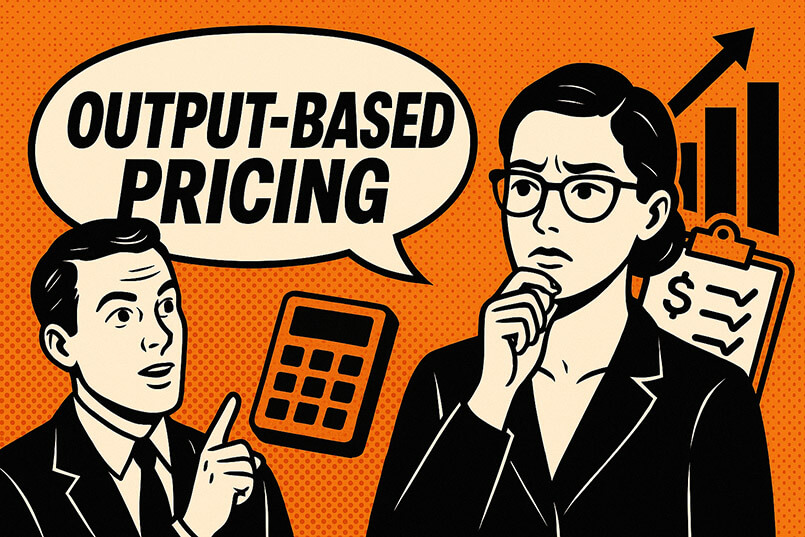There is a distinct market trend in how marketers and advertisers are compensating their agencies and suppliers: the trend is away from retainers to project-based fees.
This is due to a long-held belief by many marketers that the retainer does not deliver value, while most agencies believe that marketers are getting more than their pound of flesh under these arrangements.
However, many companies are finding the transition from retainers to project fees a frustrating one that will often not deliver the increased value, lower cost, or greater agility they expected. In our experience, this is because they will often make some fundamental errors in the process, largely due to a lack of consideration of how the current remuneration model works.
In our experience, seven important considerations can lead to a successful transition if managed.
1. Agency loss of cash flow
The first thing to realise is that most agencies love retainers. But retainers are often a double-edged sword for agencies. On one side, they guarantee cash flow and are directly linked to the cost recovery of the single biggest expense: human resources.
However, there are only limited opportunities for incremental revenue growth. The agency often recommends a partial retainer, usually around account management and creative concepts, to allow for incremental fee growth.
But moving to a project-only fee removes the certainty of the retainer, and often, the agency will resist this, even suggesting that project fees will effectively cost more in overhead if you are unable to guarantee payment to secure the resources you need, even in a situation where none of the FTEs are 100% retained on the account.
2. Incomplete scopes of work
When considering moving from retainers to project fees, the modelling is often based on the core scope of work, specifically the scope of projects that are core to the agency’s capability. Typically, creative agency scopes will include brand strategy, comms strategy, television and other media outputs, and more.
What is often overlooked is all of the tasks an agency often undertakes, such as preparing presentations, assisting with events, and the like, which all use agency resources but are not accounted for on a project or output basis.
This is why project fees often appear to reduce agency costs, but they actually remove many of the additional services agencies provide their clients.
3. Increased costs
The opposite can also happen when you move from a retainer to a project-based model because retainers can often hide economies of scale within the scope of work. This is particularly relevant in services accounts such as financial services and telecommunications, with high volumes of activities across multiple business units.
When the client moves to the project fee model paid on outputs, the sum of the outputs can quickly end up costing more than the retainer that was previously in place. This is why it is important to undertake a comprehensive review of the current remuneration to ensure you understand the new model’s impact before proceeding.
4. Seasonal peaks
One issue with a retainer is that the same fee is paid monthly, which is fine if the scope of work is reasonably consistent throughout the year. But if the work is seasonal, as it often is with some food products or events, then you will find that for some months in the year, the same fee is paid for little or no work, and for other months, it is paid for peak work.
For the agency, the project fee pays for the resources used when they are seasonally required. But unlike the retainer, it does not pay for the resources when they are not required, which becomes an issue for the agency and needs to be considered.
5. Loss of agency commitment
One of the key issues is the concern that the agency will not show the same level of commitment as when a retainer was in place. This is because project-based fees are seen as more transactional and, therefore, do not encourage a longer-term relationship.
This is an interesting perception, as our experience is that the project model tends to heighten the agency’s focus on the project and future projects.
But if this is a concern, we have also adapted and implemented hybrid models that allow for a retainer to secure core service resources in account management and remunerate the strategic, creative, tech/digital, and production resources on a project basis.
6. Project payment terms
Another issue for the agency is managing its cash flow with the project fee model. After all, some projects may be small and completed in days or weeks. Others may be longer and more complex and, therefore, take months and even more than a year. Also, projects may extend over financial periods from one financial year into the next.
A key consideration is how the project fees will be paid to the agency. Is it on completion? Or half up front and half on completion? Or do you smooth out the bumps by adding up the project fees over a period and then paying monthly, much like a mini retainer? It is crucial to resolve this to ensure the agency is paid promptly for the services provided.
7. Increased administration
An often hidden consideration is the cost of financial compliance. This is especially important in high-volume relationships, as you could be effectively moving from one monthly retainer invoice to hundreds of project invoices. The cost can be doubled if you pay 50% upfront and the balance on completion.
This effectively doubles the paperwork for both the client’s finance department and the agency’s finance and accounts department. Neither will thank you for the extra work your new remuneration model has forced upon them.
How to move from a retainer to a project fee model
1. Detail the current scope of work that you have placed with the agency and consider how this may change going forward.
2. Review the work schedule to identify potential peaks and troughs in the calendar and consider how the agency can manage this variation.
3. Benchmark the current remuneration model and understand the cost and value of the various project types you place with the agency.
4. Consider how you are planning to pay the agency. Is it project by project? Is there payment up front and on completion? Will you use the project fees to create a retainer? What works best for your schedule of work and the agency’s cash flow?
5. Plan your approach to the agency on the change and make sure this is seen for the benefit of both parties.
6. Ensure that the model is fair and sustainable for the agency and not just a cost reduction exercise.
7. Ensure the project fee model does not bog down your or your agency’s accounts and finance process.
Finally, if in doubt, talk to us. We have successfully implemented a Value-Based Remuneration model many times, ideal for more accountable retainers and project-based work.
Learn more about how our TrinityP3 Agency Commercial Evaluation Services can help you develop and implement sustainable and manageable agency fee models.




